Menus
- The high flyer
- Sensational premiere
- Production stopped in 1940 due to the war
- Technical data Moto Guzzi Condor
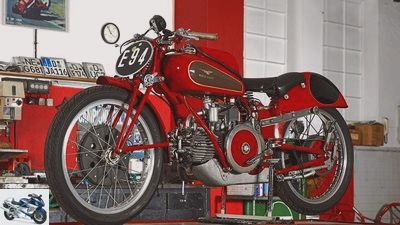
bilski-fotografie.de
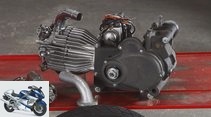

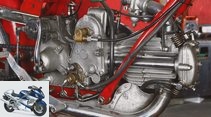
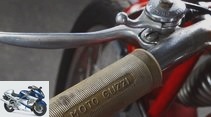
18th photos
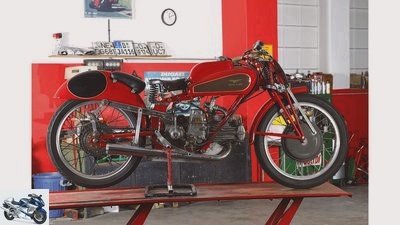
bilski-fotografie.de
1/18
Moto Guzzi Condor.

bilski-fotografie.de
2/18
The original engine was removed for performance reasons and the racing carburetor for comfort reasons.
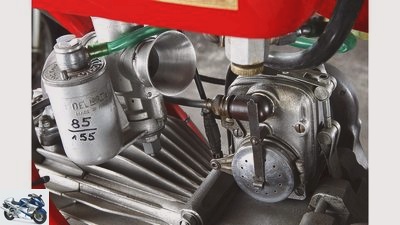
bilski-fotografie.de
3/18
The original SS-Dellorto was replaced by an SSI with an idle system.
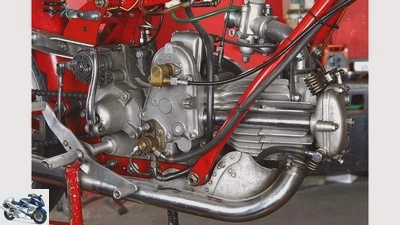
bilski-fotografie.de
4/18
Moto Guzzi Condor.
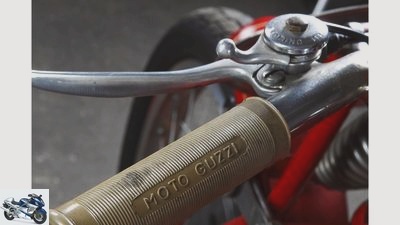
bilski-fotografie.de
5/18
Oh yes, if such a pretty handle could tell…
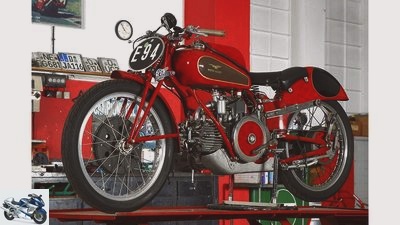
bilski-fotografie.de
6/18
Moto Guzzi Condor.
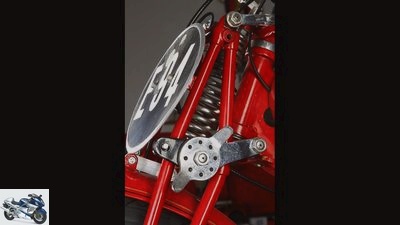
bilski-fotografie.de
7/18
The elegant parallelogram fork responds softly, the friction dampers can be finely adjusted.
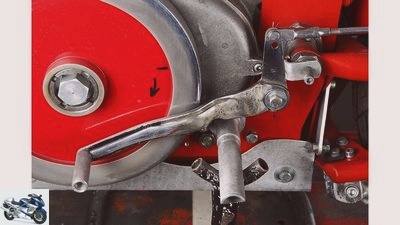
bilski-fotografie.de
8/18
Moto Guzzi Condor.

bilski-fotografie.de
9/18
Moto Guzzi Condor.
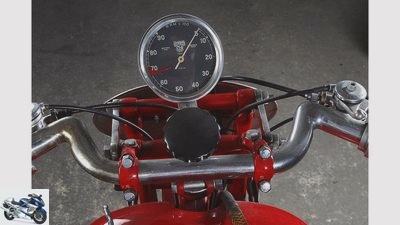
bilski-fotografie.de
10/18
Actually, the next gear comes in at a good 5500 rpm, but the short-stroke engine can also overspeed.
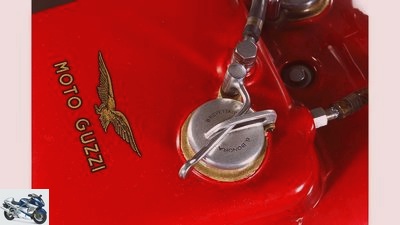
bilski-fotografie.de
11/18
Moto Guzzi Condor.
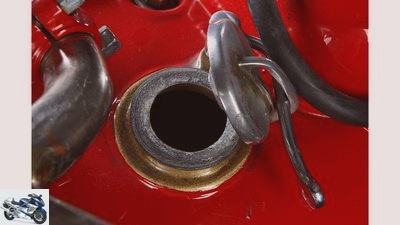
bilski-fotografie.de
12/18
Moto Guzzi Condor.
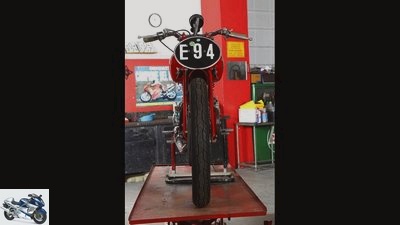
bilski-fotografie.de
13/18
Thanks to its slim silhouette and very low contour, the Condor can easily reach over 160 km / h.
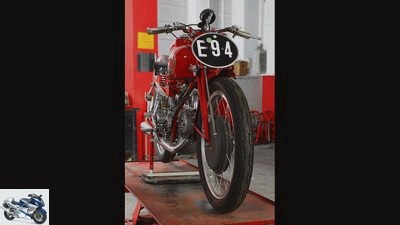
bilski-fotografie.de
14/18
The motorcycle shown is for sale together with the original parts. Interested parties send an email to Ducati-Classics@web.de.
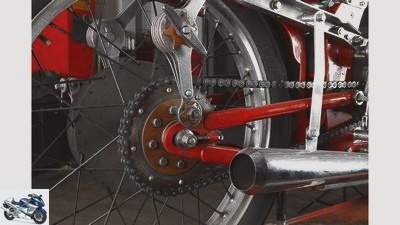
bilski-fotografie.de
15/18
Moto Guzzi Condor.
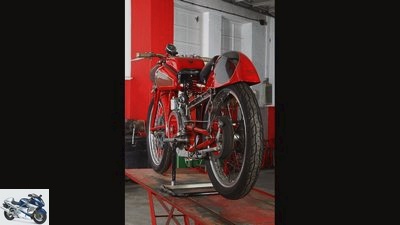
bilski-fotografie.de
16/18
Moto Guzzi Condor.
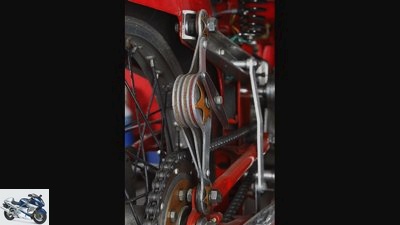
bilski-fotografie.de
17/18
In road machines, the friction damper is mounted on top of a steel tube, here on a light metal profile.
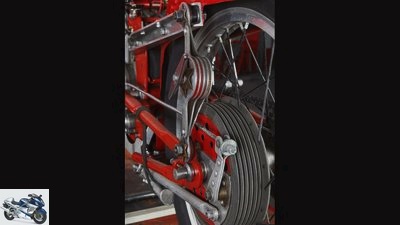
bilski-fotografie.de
18/18
Picture gallery: Moto Guzzi Condor.
In the studio – Moto Guzzi Condor
The high flyer
Content of
With an exquisite 500cc production racer, Moto Guzzi pursued two goals in 1939: firstly, the Moto Guzzi Condor was supposed to delight well-heeled private drivers and secondly, it was supposed to show off in popular long-distance rides.
When you think of Guzzi, many, many birds come to mind: falcons, herons, hawks or chickens, for example, as Falcone, Airone, Astore or Galletto have long been part of motorcycle history. This smell started in 1939 with the M.oto Guzzi Condor, and whose namesake is a huge vulture from the American mountains. So you wanted to go straight up, and in fact the flight altitude of this wonderfully equipped racer is well above the sporty, but not race-capable 500 cc GTW with its 22 hp ohv single cylinder. This upswing was needed to defend the reputation that Stan Woods and Omobono Tenni had established in numerous 500 GP victories since the mid-30s at national level.
Buy complete article
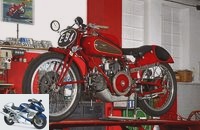
In the studio – Moto Guzzi Condor
The high flyer
Significantly reduced weight
In this competitive environment, the Moto Guzzi Condor should now have a suitable engine, and therefore its output grew to 28 hp. More importantly, the generous use of electron, a magnesium alloy, in the housing and covers significantly reduced the weight of the engine. Even the hubs of the drum brakes, which are larger than the road version, are made of the light material, so that in the end a total of 140 kilos was weighed. They could be reduced further in no time if the standard lighting system was removed. A race-ready Condor weighs at least 130 kilograms, almost 20 less than the eight hp more powerful BMW counterpart, the R 51 RS, which emerged from the R 51 and was distributed to selected privateers.
It is no coincidence, by the way, that both manufacturers tried to attract private drivers at the same time: here and there, fascist dictatorships ruled, which saw not only sporting exercise in general, but motorsport in particular as a test run for military services. And who stank in their national madness when foreign brands were victorious in the enormously popular street races additionally sponsored by the state. Rudge, Velocette and above all Norton had to be kept in check, as every race should prove its own technical superiority. Just as the Nazis bundled all motor sports enthusiasts in the National Socialist Motor Vehicle Corps, so many talented Italian racing drivers found themselves more or less voluntarily with the fascists’ traffic militias. Which then led to the fact that quite a few Moto Guzzi Condor ended up there, even being used in purely internal races. Today this use is mildly referred to as police service.
Sensational premiere
But back to the motorcycle: unlike GTC and Co., the cylinder and head are made of light metal, the enlarged valves in the roof-shaped combustion chamber have sodium-filled shafts for better cooling and are moved by a sharper camshaft. As usual, the flywheel of the Moto Guzzi Condor is located outside the engine housing, which means that the crankshaft bearings can move closer together. However, it measures just 260 millimeters in diameter instead of 280 and has slimmed down by 1.6 to 6.6 kilos. A connecting rod, which is also lighter, has a piston with two compression rings and one oil control ring. The mixture is not processed by an Amal carburetor, but by a race-proven Dellorto 32 SS. Because the flat design barely left any suitable gaps, the oil tank for the dry sump lubrication – in the GTC it was still nestled between the fuel tank and the front frame support – now moved to the top of the fuel drum and gives the machine its typical face. The engine power is fed to a racing four-speed gearbox by means of gears, the multi-plate clutch runs in an oil bath.
After a prelude with some very closely related prototypes, the Condor appeared in 1939 on the Circuito del Lario in the Lombardy mountains to gain fame and honor on the 36.5-kilometer-long road circuit with 300 bends – known by insiders as the Italian TT circuit . In fact, under the later 125cc world champion Nello Pagani, a sensational debut victory over the more than twice as powerful supercharged Gilera four-cylinder was achieved. The solution to the riddle lies not only in the driving quality of the experienced Pagani, but also in the outstanding handiness and stability of the Condor. Plus points that the owner of the MOTORRAD Classic photo model emphasizes again and again. The man bought this Guzzi in the early 1980s and was delighted at many VFV races that his Moto Guzzi Condor was able to turn the corner so nimbly despite having a large wheelbase and a 21-inch front wheel. But it also came out quickly, he adds with a wink and remembers the full punch of the short stroke. Only on longer straights, a couple of fast BMWs passed him.
Production stopped in 1940 due to the war
Unfortunately, the Moto Guzzi Condor had only a few races when it was created, and so after Pagani’s internationally acclaimed success and several victories in the Italian circuit championship, it was only able to win the 1300-kilometer long-distance Milano-Taranto race. Incidentally, the regulations of these events were responsible for ensuring that the Condor came with lighting, kick starter and tool compartment as standard. After only 69 units had been built, production was discontinued in 1940 due to the war. But quite a few experienced a second spring towards the end of the 1940s and started again in national races.
There they soon met the successor to the Moto Guzzi Condor, the famous Dondolino. The motorcycle shown here probably continued to run after the war, which could explain why it has a Dondolino rear fender. Originally an unadorned, uncontoured sheet of metal sat there. The owner put the original engine block on the shelf and instead installed a Falcone housing upgraded to three crankshaft bearings. The Dondolinos also had something like that from 1948, and with it the speed stability increased enormously. He found the racing carburetor impractical because of the long waiting times at many veteran events because it was not idling. Sometimes even a Condor ends up in the lowlands of the practice.
Technical data Moto Guzzi Condor
Moto Guzzi Condor
engine: Single-cylinder four-stroke engine, two valves, operated by a camshaft below, bumpers and rocker arms, bore 88 mm, stroke 82 mm, 498 cm³, compression 7: 1, approx. 28 HP at 5,000 rpm, 32-series Dellorto round slide carburetor, dry sump lubrication, multi-disc oil bath clutch, four-speed gearbox, chain drive
landing gear: Frame made of tubular steel and sheet metal, parallelogram fork at the front, two-arm triangular swing arm at the rear, simplex drum brakes at the front and rear, dry weight approx. 130 kg, tank capacity 18 l
Related articles
-
Siemer On the move: Moto Guzzi V7 Steam announcement Content of No teeth in the mouth, but La Paloma whistles: This is what it looked like when Moto…
-
Comparison test of two-cylinder: Ducati 750 Sport, Laverda 750 SF and Moto Guzzi 750 S
29 pictures 1/29 Twin and away: The Ducati 750 Sport, Laverda 750 SF and Moto Guzzi 750 S in a comparison test. 2/29 Your …
-
On the move: BMW R 100 S, Honda CB 900 F Bol d’Or, Moto Guzzi Le Mans I.
fact On the move: big bikes from the 70s BMW R 100 S, Honda CB 900 F Bol d’Or, Moto Guzzi Le Mans I. Content of At the turn of the decade, MOTORRAD…
-
Driving report Moto Guzzi MGS-01 Corsa
Gori Driving report Moto Guzzi MGS / 01 Corsa Adler learns to fly In autumn she was one of the stars of Intermot. The MGS / 01 study caused a sensation…
-
Moto Guzzi V7 Special and Moto Guzzi V7 II Special in comparison test
fact 38 pictures fact 1/38 Moto Guzzi V7 Special and Moto Guzzi V7 II Special in a comparison test. fact 2/38 … the Moto Guzzi V7 II Special scores with …
-
Top test Moto Guzzi 1200 Sport 4V
fact Top test, Moto Guzzi 1200 Sport Moto Guzzi 1200 Sport 4V Moto Guzzi hasn’t just been in crisis since the crisis. In the identity crisis. Classic or…
-
Sport: Moto Guzzi 500 Bicilindrica
Nakamura 10 photos Nakamura 1/10 The open hairpin springs of the grandiose 120-degree V2 don’t drool around with oil. Nakamura 2/10 The version from 1948…
-
On the move: Moto Guzzi California
Moto Guzzi On the move: Moto Guzzi California and California Vintage California Dreams Content of In the 1970s, the Beach Boys introduced a new, dynamic…
-
Projects from BMW and Moto Guzzi, Triumph Erlkonige
Lehmann Projects from BMW and Moto Guzzi, Triumph Erlkonige Winter blossoms The 2007 motorcycle vintage is already sprouting and blossoming. Still hidden…
-
Retro motorcycles from Kawasaki, Moto Guzzi and Triumph put to the test
Gargolov 23 photos Gargolov 1/23 Chrome, sweet chrome. No-frills round clocks at Triumph. Gargolov 2/23 Comparative test of retro motorcycles – these…